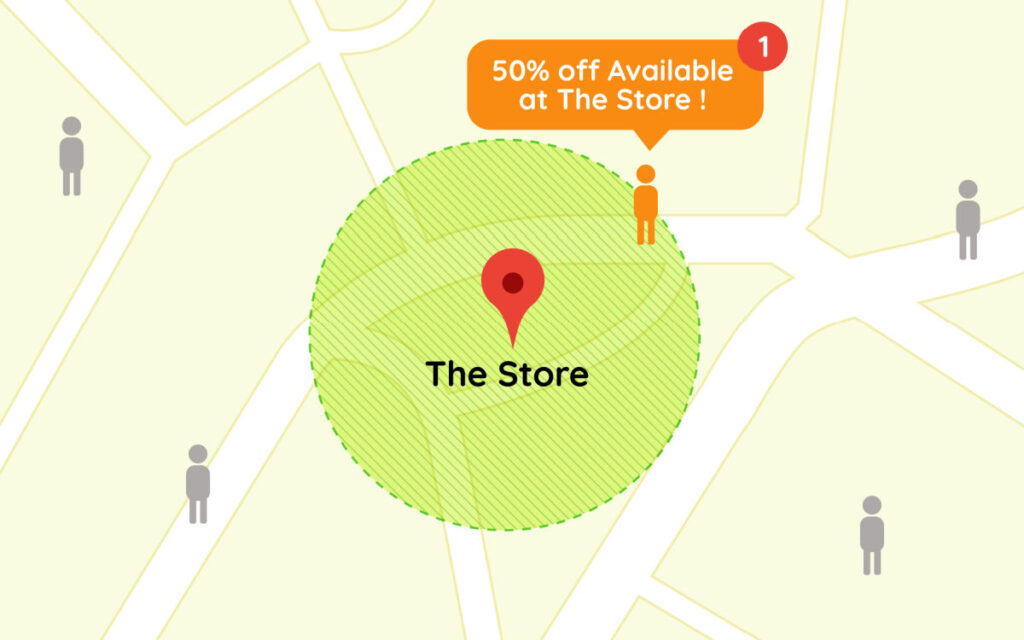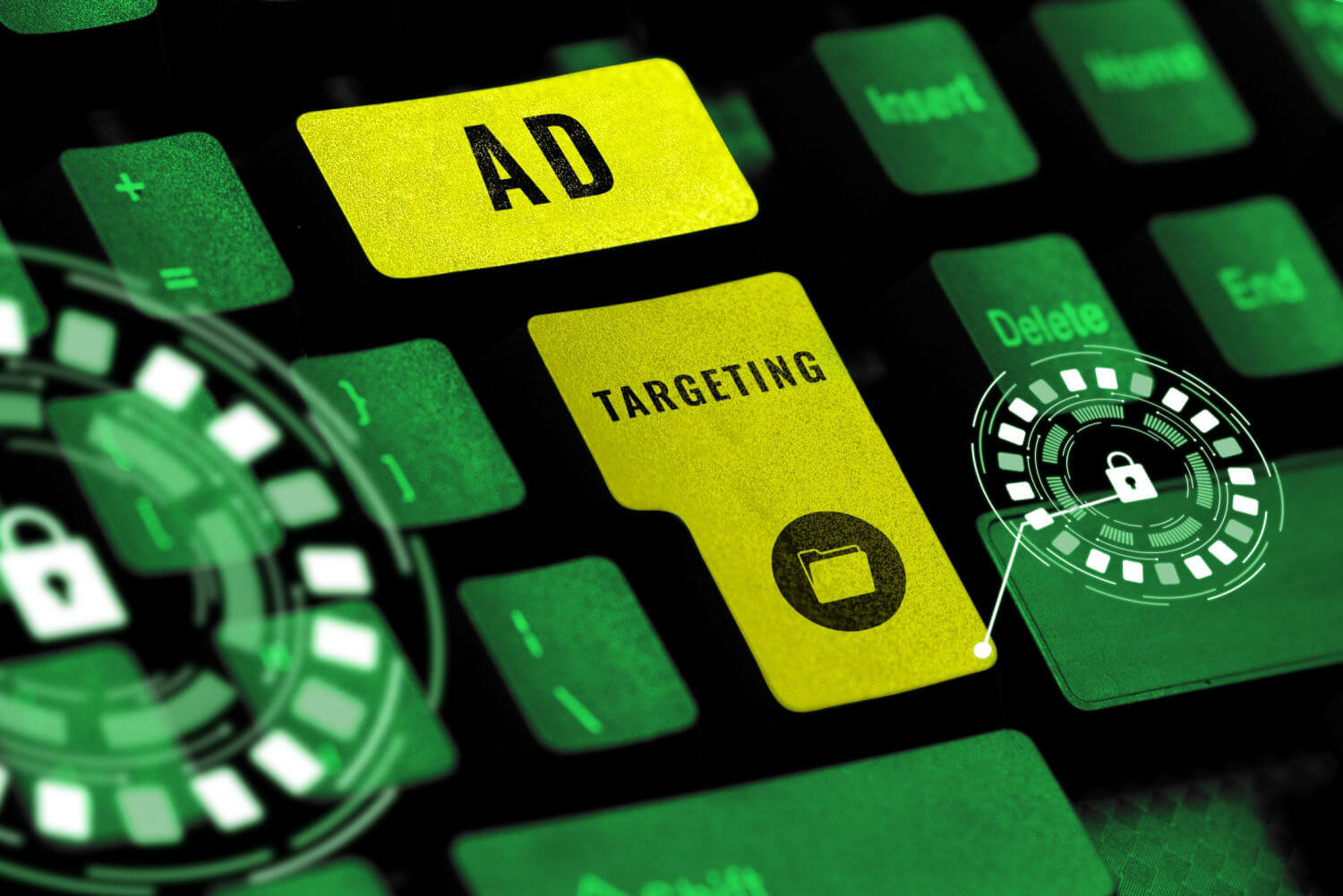Advertising is becoming increasingly expensive, and mistakes happen regardless of advanced audience targeting tools.
This has led to the birth of the idea of geofencing. The term “geofencing” implies using GPS or RFID technology to create a virtual geographic boundary, which allows the software to start or stop ads when a mobile device enters or leaves a particular area.
In this way, ads are only shown to customers who are highly likely to purchase while avoiding wasting money on those who are unlikely to make a purchase.
But what exactly is geofencing marketing, and how does it work? What are the advantages of geofencing marketing? How can you implement this strategy into your existing marketing efforts?
What is geofencing marketing, and why is it important?
Geofencing marketing, also known as geofencing advertising, is a type of location-based marketing. It implies a specific geographical area around which virtual borders are set to monitor the movement of people. Every time a person who owns a mobile phone enters that zone, they receive a notification containing a brand, service, product, or store advertisement.
So, think of geofencing marketing as a fenced zone covered by alarms – as you step into this area, the advertiser’s alarm will go off, and you will receive an advertisement through a mobile app or website so that you do not miss their offer.
Geofencing is a highly specialized form of marketing, especially compared to traditional advertising channels. Let’s take, for example, TV, radio, or newspaper advertisements, which address the entire audience – someone may be interested in their offer, while many will ignore it.
Unlike this random type of advertising, geofencing targets people who are in close physical proximity and who, based on demographic characteristics, are more likely to make a purchase.
Because of this, geofencing marketing is more effective and more affordable than traditional forms of advertising through mass media.
How does geofencing marketing work?
The concept of geofencing may seem complicated to the uninitiated, but it is actually very simple, especially if an experienced marketing agency implements this strategy.
Here’s how geofencing works in practice:
- You select the area where geofence will be placed.
- You create an attractive ad that will invite customers to your address.
- When a person enters the geo-fence perimeter, they are added to the list of audiences that will receive the advertisement.
- The person receives the advertisement via text message, mobile app notification or ad on social media for up to 30 days.
Let’s say you are on a busy street with many clothing retailers – you have a lot of competition, and you naturally want to attract customers. By placing a geo-fence around your retail store, customers will receive an advertising reminder to stop by your store.
With geofencing marketing, you are not limited to your own location – you can geofence the area of your competitors or associates, nearby streets and shops, events, or simply a place where your targeted audience likes to spend time.
Your geofence ads can include discounts, promotions, giveaways, and similar enticing offers to attract customers. Also, you can choose the exact time when ads reach customers – if you have the most traffic on weekday afternoons and weekend mornings, set the time of your ads so that they are maximally effective and justify the investment.
How to implement geofencing into your marketing strategies?
You can implement geofencing by setting a radius around the business or using a parcel map. Both methods have advantages and disadvantages. They will inevitably inform the target audience about your offer, but most business facilities are not circular, so the geofencing radius will be a waste of money. Parcel mapping is a bit more precise but can also include several businesses in the exact location.
Polygon mapping is the most effective way to implement geofencing, where a geo-fence is placed right around your store or business facility.
Once you’ve determined the exact location to be geo-fenced, be smart about your marketing efforts:
- One of the first rules of marketing is to get to know your target audience – who your customers are, what they’re looking for, and how your products or services solve their problems. Based on the answers to these questions, you will create a marketing strategy that will be successful.
- Add a clear call to action (CTA) to your marketing messages. It’s a good idea to give your messages an air of urgency – a promotion that only lasts today or a countdown until it expires usually draws people in to take advantage of the offer.
- Respect the user’s privacy and let them know that you don’t have their data, but use a marketing strategy based on the geolocation of which they are a part.
- Base your campaign on physical proximity. If we’re talking about customers who will come on foot, let them be 10 minutes away, and if we’re talking to drivers, let them be five minutes away from your location.
- Regularly analyze the success of your geofencing campaigns and optimize them based on the results obtained.
Geofencing marketing examples
One example of well-used geofencing marketing is the well-known coffee giant Starbucks. Starbucks sends push notifications to users near their geo-fence.
For example, if your most frequent order is a mocha latte, Starbucks will notify you with a personalized message on days when this product is on sale.
Also, on selected days of the month, the company has a happy hour – buy one get one (BOGO) from 2 to 7 pm. At that time, if you happen to be near a Starbucks, you’ll receive a notification about this offer that you won’t want to miss.
How effective is geofencing?
Here are some interesting statistics about the effectiveness of geofencing:
- Mobile ads with geofencing marketing have twice the click-through rate.
- Geofencing is compatible with 92% of smartphones.
- 53% of customers visited a suggested geo-location after receiving a geofencing notification.
- 90% of geofencing messages are read within 3 minutes after they arrive.
Geofencing marketing is an effective way to remind your existing and new customers to stop by your business. Research shows location-based notifications are up to 10 times more effective than regular push notifications.
Advantages of geofencing marketing
Now that we know what geofencing marketing is and how you can implement it in your marketing strategy, let’s see how you’ll benefit from it:
- Geofencing allows you to reach your customers more efficiently. As we explained, you create a virtual fence, and when a customer is inside or on the perimeter of it, they receive a notification to stop by and take advantage of your offer. So the client is already there; he just needs a little incentive to visit you.
- Geofencing enables sending personalized offers. Clients today are bombarded with advertisements everywhere, and if you want yours to get attention, personalize it. Collecting demographic data and tracking responses will give you insight into your customer’s preferences. That way, you’ll be able to create personalized offers that people love to see and respond to.
- Increases customer engagement. As we mentioned in point number 2, people like to see offers created specifically for them. When you reach out to customers with personalized messages, they will want to come and see what you have to offer.
- Increases brand awareness. Geofencing allows you to advertise your brand directly and get your audience thinking about it, which increases brand awareness.
- It gives you an advantage over your competition. You can place a geofence anywhere you want – even around your competitor’s business location. This way, you can “drag” customers who would buy from your competitor and bring them to yours.
What are the disadvantages of geofencing?
Geofencing sounds almost too good to be true, doesn’t it? Although it has many advantages, it is fair to say that this marketing strategy also has downsides:
- GPS data turned off. One of the most common concerns of mobile phone users is fast battery drain. This is why many users turn off location tracking and mobile data, and geofencing marketing can only work if these parameters are turned on.
- Privacy concerns. Although geofencing is based solely on the shared location, many customers might feel that their privacy is threatened and therefore have an aversion to this marketing method.
- Geofencing requires knowledge and maintenance. Although we have simplified it quite a bit, implementing this marketing method is not a piece of cake. You will probably need the help of an experienced marketing agency for this step and in creating the messages and the subsequent analytics. Everything listed requires costs, but like any other marketing type, consider this an investment.
Is geofencing expensive?
Geofencing marketing is billed on a cost-per-mile (CPM) model by most marketing agencies. The cost will vary depending on whether the campaign runs on desktop and mobile (averaging $3.5 to $15 CPM) or TV ($20 to $50 CPM). Other factors influence the price, mainly the tactics you use to target clients. The more specialized the tactic, the more effort, work, and knowledge it will require, therefore, it will be more expensive.
How to get a geofencing marketing strategy suitable for your needs?
As you can conclude from everything we’ve shared, geofencing is a location-based marketing principle that can take your business further. By implementing geofencing in strategic places, you will attract more customers than ever before and thus increase your profits.
Implementing geofencing alone can seem overwhelming, especially if you have no experience in this domain. Don’t worry, that’s why we’re here. Contact us and schedule a consultation during which you will get all the answers to your questions about personalized geofencing marketing tailored just for the needs of your business.




